- TOP
- Mirror with Horai (Penglai) Motif
Overview
Mirror with Horai (Penglai) Motif
- Museum No.
- EK17-74
Showing 1-6 of 1
| Title | Mirror with Horai (Penglai) Motif |
|---|---|
| Designation | |
| Artist | |
| Category | Metalwork(E), Bronze Mirrors |
| Country | Japan |
| Period | Kamakura |
| Century | 13th |
| Year | |
| Quantity | |
| Materials | |
| Dimensions | Diameter 11.6cm Rim height 0.75cm Rim width 0.4cm |
| Inscription by | |
| Signature/Seals Etc | |
| Donor |
Included Works

EK17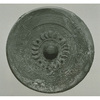 Mirror with Abstract Animals in Band
Mirror with Abstract Animals in Band
EK17-1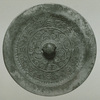 Mirror with Whirlpool Design
Mirror with Whirlpool Design
EK17-2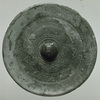 Mirror with Flower Design and Seven Arcs
Mirror with Flower Design and Seven Arcs
EK17-3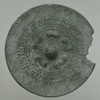 Mirror with Five Animals
Mirror with Five Animals
EK17-4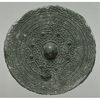 Mirror with Abstract Animals in Band
Mirror with Abstract Animals in Band
EK17-5 Mirror with Four Animals
Mirror with Four Animals
EK17-6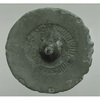 Mirror with Tooth Comb Pattern
Mirror with Tooth Comb Pattern
EK17-7 Mirror with Abstract Animals in Band
Mirror with Abstract Animals in Band
EK17-8 Mirror with Pines and Cranes
Mirror with Pines and Cranes
EK17-9 Mirror with Cranes and Pines and Butterflies
Mirror with Cranes and Pines and Butterflies
EK17-10 Mirror with Arabesque and Phoenixes
Mirror with Arabesque and Phoenixes
EK17-11 Mirror with Chrysanthemums and Birds
Mirror with Chrysanthemums and Birds
EK17-12 Mirror with Chrysanthemums, Butterflies, and Birds
Mirror with Chrysanthemums, Butterflies, and Birds
EK17-13 Mirror with Globeflowers and Flying Sparrows
Mirror with Globeflowers and Flying Sparrows
EK17-14 Mirror with Chrysanthemum Branches and Flying Sparrows
Mirror with Chrysanthemum Branches and Flying Sparrows
EK17-15 Mirror with Autumn Plants, Butterflies, and Birds
Mirror with Autumn Plants, Butterflies, and Birds
EK17-16 Mirror with Cranes and Pine Needles
Mirror with Cranes and Pine Needles
EK17-17
This object may be one within a set or the title of a set. To see all objects in the set, perform a Category Search by the Museum Number below, entering numerals only before the hyphen.







According to ancient Chinese legend, Mount Penglai (J., Hôrai) was a utopia where immortals dwell, in the middle of the eastern seas. The elixir of eternal youth and immortality can be found there; pines, bamboo, and plum trees grow in profusion; cranes fly gracefully in the sky and tortoises gently swim in the sea. In Japan, belief in these immortals appeared around the time of the Ritsuryô period (when the early Japanese legal codes came into place from the early 7th through early 10th centuries), but Penglai did not occur as a design motif in the applied arts until the latter half of the Heian period (794-1185). This desire for longevity was frequently employed as a decorative motif on mirrors used in daily life, and mirror designs deriving from the Penglai motif persisted until the end of the early Modern period (1593-1868).
Compositions featuring pine trees flourishing on jutting rocks in the upper right with cranes sweeping the skies above rough breakers to the left became standardized around the first half of the 13th century. On this mirror, the tortoise-shaped knob appears rather stylized, but the depiction of the rocky promontory is archaic, and the flying crane projecting from the inner band into the outer band is very close in composition to that on Mirror with Hôrai (Penglai) Motif (EK17-52), and may be dated no earlier than the later 13th century.
Japan-Kamakura